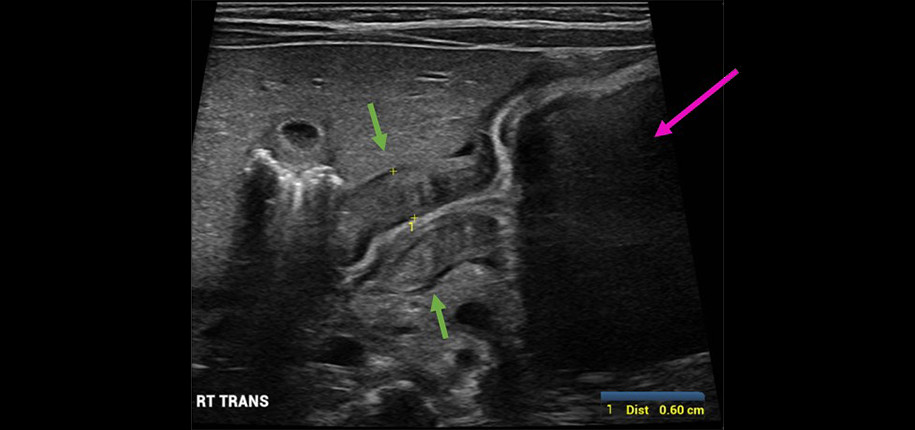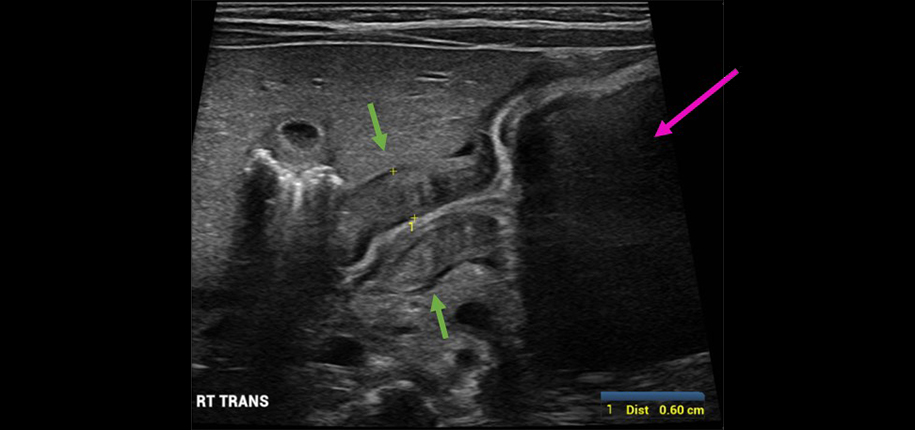
What is the pylorus?
The pylorus is the lower portion of the stomach that connects the stomach to the small bowel (duodenum). Normally food passes from the stomach to the small bowel through the pylorus without any problem.
So what happens in pyloric stenosis?

In pyloric stenosis, the muscles in this part of the stomach enlarge, narrowing the opening of the pylorus and eventually preventing food from moving from the stomach to the intestine leading to forceful vomiting and dehydration. Vomiting might be mild at first and gradually become more severe as the pylorus opening narrows.?Babies who have pyloric stenosis often want to eat soon after vomiting.
Symptoms present between three and five weeks of age and very rarely occur after 12 weeks of age. Pyloric stenosis is more common in male babies, in preterm babies and in firstborn children.
Why does it happen?
We don’t know, but it is likely due to multiple causes involving genetic and environmental causes.
Environmental factors such as:
How is the diagnosis done?
In addition to the history and the physical examination, the doctor will request an ultrasound. Ultrasound is the main imaging modality used to diagnose pyloric stenosis. It helps us to see the pylorus, evaluate its size and look for fluid passing through the pylorus into the small bowel.


How is pyloric stenosis treated?
Usually, pyloric stenosis is treated with surgery to widen the pylorus so that food can pass through it into the intestines.
Dr. Nadeen K Abu Ata, author; Glenn Miñano, BFA, editor; Meredith Towbin, copy editor
References: